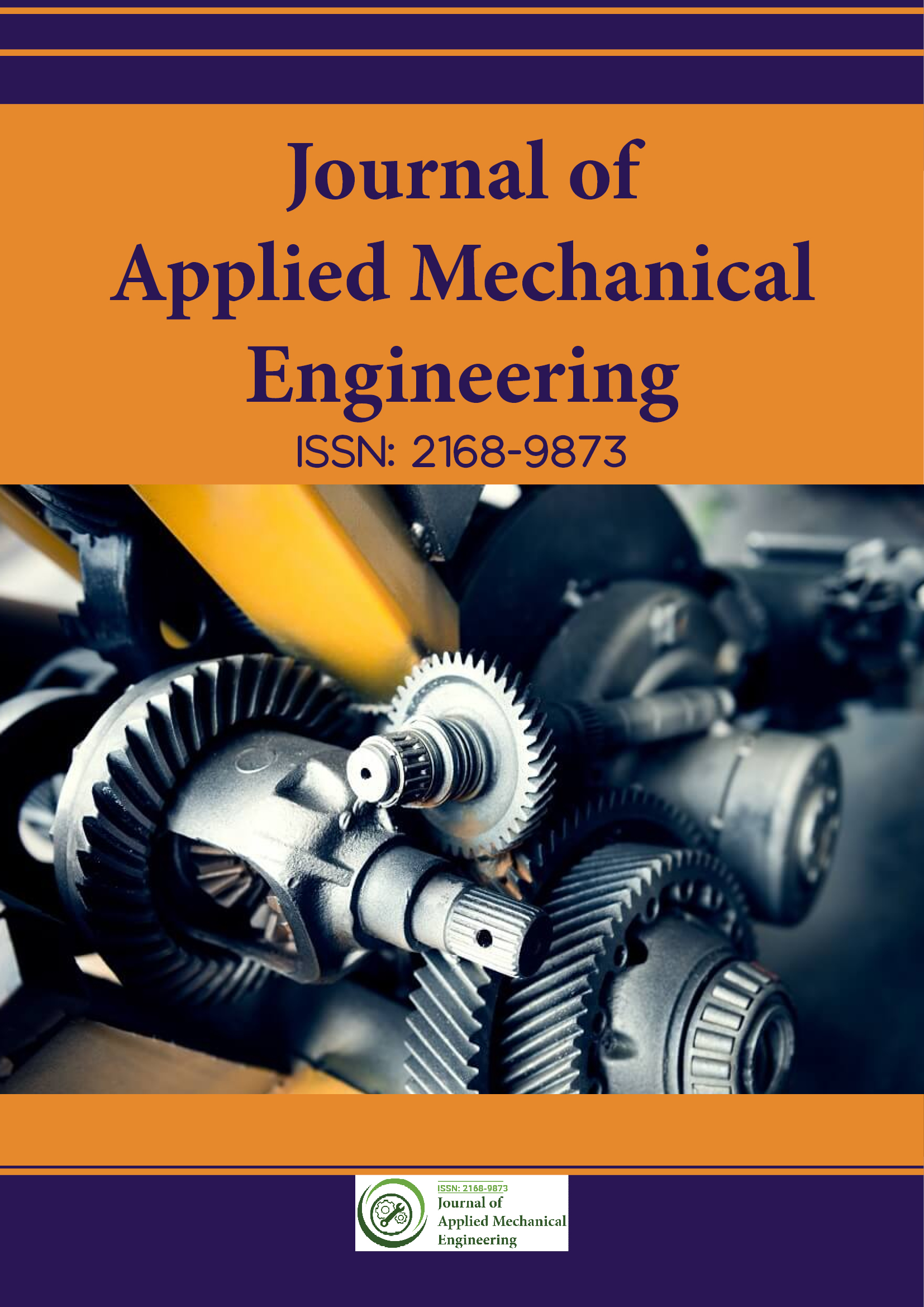Indexed In
- Genamics JournalSeek
- JournalTOCs
- CiteFactor
- RefSeek
- Hamdard University
- EBSCO A-Z
- OCLC- WorldCat
- Publons
- Google Scholar
Useful Links
Share This Page
Journal Flyer

Open Access Journals
- Agri and Aquaculture
- Biochemistry
- Bioinformatics & Systems Biology
- Business & Management
- Chemistry
- Clinical Sciences
- Engineering
- Food & Nutrition
- General Science
- Genetics & Molecular Biology
- Immunology & Microbiology
- Medical Sciences
- Neuroscience & Psychology
- Nursing & Health Care
- Pharmaceutical Sciences
Perspective - (2025) Volume 14, Issue 1
Ergonomics in Mechanical Engineering: Designing for Human Performance and Well-being
Saeed Ibrahim*Received: 14-Nov-2023, Manuscript No. JAME-23-23905; Editor assigned: 17-Nov-2023, Pre QC No. JAME-23-23905 (PQ); Reviewed: 01-Dec-2023, QC No. JAME-23-23905; Revised: 03-Jan-2025, Manuscript No. JAME-23-23905 (R); Published: 13-Jan-2025, DOI: 10.35248/2168-9873.25.14.523
Description
Ergonomics, the science of designing systems and products to optimize human performance and well-being, stands at the forefront of considerations in mechanical engineering. It goes beyond mere functionality, emphasizing the integration of human factors into the design process to create products and environments that enhance efficiency, safety, and comfort. In this article, we explore the pivotal role of ergonomics in mechanical engineering, its impact on design principles and its significance in ensuring the seamless interaction between humans and machines.
Understanding ergonomics
Ergonomics, derived from the Greek words "ergon" (work) and "nomos" (laws), is the study of the interaction between humans and their environment. In mechanical engineering, ergonomics focuses on optimizing the design of tools, machinery and workspaces to align with the physical and cognitive capabilities of the human operator. By prioritizing user-friendly design, ergonomics aims to enhance productivity, reduce the risk of injuries and improve overall user satisfaction.
Design principles in ergonomics: Ergonomic design in mechanical engineering adheres to several key principles. These principles include the accommodation of various body sizes and shapes, minimizing repetitive movements, optimizing the placement of controls and displays, and ensuring that tasks can be performed comfortably over extended periods. Integrating these principles into the design process is essential for creating systems that promote efficiency while minimizing the risk of musculoskeletal disorders and fatigue. Human-centered design is the core tenet of ergonomics, emphasizes involving end-users in the design process. Understanding the needs, preferences and limitations of the individuals who will interact with mechanical systems is crucial for creating products that align seamlessly with human capabilities. This collaborative approach ensures that the end result is not only functional but also user-friendly and tailored to the specific requirements of the intended users.
Applications in mechanical engineering
Workstation design: Ergonomics plays a pivotal role in the design of workstations, ensuring that they are conducive to efficient and comfortable work. Adjustable chairs, ergonomic desks and properly positioned computer monitors exemplify ergonomic considerations in an office setting. In manufacturing environments, ergonomic workstations minimize strain on workers, promoting productivity and reducing the risk of workrelated injuries.
Tool and machine design: The design of tools and machines is a critical aspect of mechanical engineering where ergonomics comes into play. Hand tools with ergonomic handles, for example, reduce the risk of hand and wrist strain during prolonged use. Similarly, the controls and interfaces of machinery should be designed with the operator's comfort and ease of use in mind, enhancing both safety and efficiency.
Vehicle design: In automotive and aerospace engineering, ergonomics influences the design of vehicle interiors to optimize driver and passenger comfort. Adjustable seating, intuitive control placement, and user-friendly interfaces contribute to an ergonomic driving experience. Aerospace engineers also consider ergonomics when designing cockpit layouts to enhance pilot performance and reduce cognitive workload.
Medical device design: Ergonomics is particularly significance in the design of medical devices, where precision and ease of use are paramount. From surgical instruments to diagnostic equipment, considering the ergonomics of the user interface and the physical demands placed on healthcare professionals ensures optimal performance and patient safety.
Challenges and considerations: Designing for a diverse user population, each with unique physical abilities and limitations can be challenging. Engineers must account for variations in body size, strength and mobility to create products and systems that cater to a broad range of users. Mechanical systems often operate in dynamic environments, requiring adaptability to various conditions. Designing for ergonomics in such scenarios involves anticipating and accommodating changes in user needs, environmental factors and task requirements. The rapid pace of technological advancements introduces new challenges in ergonomics. The integration of emerging technologies, such as augmented reality or advanced robotics, requires careful consideration of how these technologies impact the interaction between humans and machines. Implementing ergonomic design features may entail additional costs in terms of research, development, and production. Balancing the integration of ergonomic principles with cost considerations can be a delicate task for engineers and project managers.
Conclusion
Ergonomics has evolved from being a niche consideration to a fundamental aspect of mechanical engineering. By prioritizing human factors in design, engineers contribute not only to the efficiency and safety of mechanical systems but also to the overall well-being of users. From workstation design to the development of cutting-edge technologies, the principles of ergonomics continue to shape the landscape of mechanical engineering. As the field progresses, the collaboration between engineers and end-users, along with the integration of emerging technologies, will play a pivotal role in creating mechanical systems that are not only technologically advanced but also inherently human-centric. The future of mechanical engineering lies in the seamless integration of technology and ergonomics, creating a harmonious relationship between humans and the machines they interact with on a daily basis.
Citation: Ibrahim S (2025) Ergonomics in Mechanical Engineering: Designing for Human Performance and Well-being. J Appl Mech Eng. 14:523.
Copyright: © 2025 Ibrahim S. This is an open-access article distributed under the terms of the Creative Commons Attribution License, which permits unrestricted use, distribution, and reproduction in any medium, provided the original author and source are credited.

